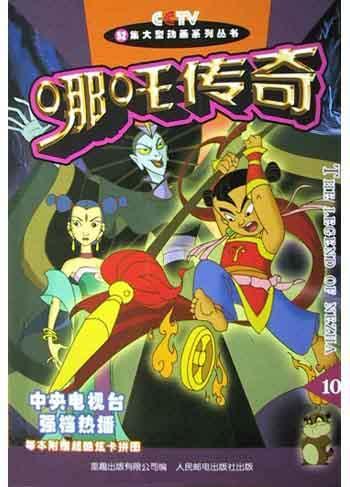英语研究性学习报告:英语中的时态
 番木瓜
番木瓜 灵蜥爱
灵蜥爱
英语中的时态用法比较研究在英语中, 时态是英语语法中的难点之一,它种类多,容易混淆,下面笔者通过几种时态比较, 帮助英语学习者理解和掌握时态的用法。现在一般时与现在完成时 现在一般时与现在进行时现在完成时与过去一般时 过去完成时与过去一般时过去进行时与过去一般时 将来一般时与现在进行时现在一般时与过去一般式 现在完成时与现在完成进行时钱塘个人空间现在一般时与过去完成时 钱塘个人空间
现在一般时与现在完成时钱塘个人空间1) I come from Shanghai(上海人)I have come from Shanghai(从上海来)2) You read very well. (强调能力)You've read very well. (强调一次刚完成的动作)钱塘个人空间mN w9r{.r;p7w3) I forget.(一时想不起来了)I have forgotten.(仍没想起来,可能已回忆起来了)钱塘个人空间 L9MT5A$C
y4z5q$E4x4) The book is written in simple English. (表状态)The book has been written in simple English.(表动态,已用英语写成)钱塘个人空间 5) Every time I see him, he's been reading. (两个动作不可能同时进行)Every time I have seen him, he's been reading. (强调两个动作同时进行)6) He is gone. (强调状态)He has gone (强调动作和时间)7) He won't come till the play begins. (演出开始时)钱塘个人空间He won't come till the play has begun.(戏已开始) 8) After I leave school, I'll go to college. (两个动作紧密相接)钱塘个人空间After I have left school, I'll go to college.(强调毕业后,两个动作可能有间隔) It is a long time since I saw you last. It's been a long time since I saw you last.(这两句话一样,后一句是美国英语)
Where are you? (在哪)Where have you been?(去了哪)2. 现在一般时与现在进行时 He works hard.(强调始终如一)He is working hard.(强调现在)2) What do you do? (干什么工作的)What are you doing?(在干什么)3) Here comes the bus! (表高兴和欣慰)4I7w'pU Jv%w
e
?
e0The bus is coming.(汽车到来的情景)4) I forget him name. I'm forgetting his name.(差点把他的名字忘了)Y9c}h4rz05) You don't eat much. (强调胃口不大)You're not eating much.(你怎么不吃呀)6) The match starts at 7 o'clock. (比较固定,不宜改变)The match is starting at 7 o'clock.(可以改变)钱塘个人空间9tY#Y'V#M2cZ|I2}7) Tom always comes late. Tom is always coming late.(表示不满,责备)8)Tom goes to college now.Tom is going to college now.(这两句区别不大,后者更生动)9) I tell you.(我可以告诉你)I'm telling you.(我告诉你吧,有感情色彩)
10) He always sleeps in the afternoon.He is always sleeping in the afternoon.(后者意味着整个下午都睡掉了)11) I expect you to phone me. ( 几乎等于命令)I'm expecting you to phone me.(婉转)}6U
N
Q B9T0k!c012) What do you say? What are you saying?(你说些什么呀,表说话人惊讶,不满)12) I find that the book is too difficult for me.(强调结果) I'm finding that the book is too difficult for me. (强调过程,逐渐感到)13) Apples cost more these days.(强调事实)Apples are costing more these days.(越来越贵)14) He always thinks of others.He's always thinking of others.(表示赞扬)15) Whenever I see him, he argues with somebody.(强调两个动作有先后) Whenever I see him, he is arguing with somebody.(强调两个动作同时进行)I hope you'll give us some advice.I'm hoping you'll give us some advice.(表示语气婉转) I must go. (我应该去)I must be going.(我该走了)18) We can discuss this while we eat.(说话是没用餐)We can discuss this while we are eating.(进餐已开始)3. 现在完成时与过去一般时1) I've seen him this morning.(还在上午的时间里)I saw him this morning.(时间已不在上午了)2) Who's opened the window? (窗户还在开着)Who opened the window? (与现在无关,窗户可能已关上)3) Have you ever heard him sing? (他可能不是爱唱歌)Did you ever hear him sing?(你曾听过他唱歌吗,他可能是歌唱家)
4) Have you ever heard of such a thing? (你听过这种事吗)
Did you ever hear of such a thing?(这种事, 你听说过吗? 是一个修辞性问题,表示惊异。)5) What have I done to make you so angry? (对方仍生气)What did I do to make you so angry? (暗示某一过去的时间,可能对方已不生气了。) 6) How has he done it? (他这活干的怎么样?强调结果)How did he do it?(他是怎么干这活的?强调干活的方式)7) He has lived in New York for eight years. (他仍在纽约)He lived in New York for eight years.(他可能不在人世了)8) He has been called a thinker.He was called a thinker.(他曾被誉为思想家)
09) You've heard what I said. (你听见我的话了)You heard what I said.(你是听见我的话的,口气严厉,具有感情色彩。)10) I've lost my pen. (笔还没找到)I lost my pen.(笔可能找到了)[11) He has already been there. (曾去过哪)He was already there.(当时在哪)12) Since I have been ill, my friend has visited me every day.(生病还在延续)Since I was ill, my friend has visited me every day. (病已好了)13) Have you slept well? (暗示疲倦了,休息后是否好些了)~HTy)U iE;c0Did you sleep well?(暗示睡的是否舒服,满意) 过去完成时与过去一般时1) I came here after I finished middle school.(两个动作每间隔)I came here after I had finished middle school.(两个动作有间隔,强调先后概念)
q2) I waited till I saw him.I waited till I had seen him. (这两个句子差不多,过去完成时更普遍)3) We hoped he would come.(我们希望他来)We had hoped he would come.(我们本希望他来4) I don't think he sang as well as he once did.(指具体一次)I don't think he sang as well as he had once done.(泛指以前,现在可能不唱了)5) Before I came here, I was a soldier.(我来此以前在当兵)Before I came here, I had been a soldier.(我来此以前,曾当过兵)6) Jim said he didn't know he was so strong.(表示Jim在说话时仍很结实) Jim said he didn't know he had been so strong.(表示在Jim说话之前曾结实过)7) They were friends from many years.(表示现在还是朋友)They had been friends for many years.(意味这友谊结束了)钱塘个人空间iGz:[!Cg8) He did the work at 6.(强调时间He had done the work at 6. (6点工作已做完)9) I learned French ring my holiday.(强调学了)r#ofsde-F5y(x0I had learned French ring my holiday. (强调学会了)10) When she sang she sat down.(表示唱着坐下)When she had sung she sat down.(表示唱完坐下)11) I went to bed when I did my homework.(不明确)I went to bed when I had done my homework.(作业做完)12) I have lived here since I was a child.(从我长大成人)钱塘个人空间UC }.k#vB0uMI have lived here since I had a child.(从我孩提时)5. 过去进行时与过去一般时1) I read a book yesterday. (书已看完)I was reading a book yesterday.(书尚未看完)2) The guests arrived.(客人已到)The guests were arriving.(客人陆续到达) He woke from a dream. (表示全醒)He was waking from a dream.(表示初醒)4) The old man died.(已死) The old man was dying.(要死)5) John told me about it.(告诉我了,我都知道了)John was telling me about it.(跟我谈起过,我想了解的事情)6) They persuaded me to go along with them.(已经说服)They were persuading me to go along with them.(还在劝说)7) The wind blew hard all night.(强调事实)The wind was blowing hard all night.(强调风刮个不停)8) I expected you. I was expecting you.(客气,表示可能等了很旧了)钱塘个人空间V H }}9) He knocked at the door.(强调一次性)He was knocking at the door.(强调多次性)6. 将来一般时与现在进行时1) Will he come? Is he coming?(时间发生的比较近)2) How long will you stay hear? (表示意愿)How long will you stay here?(表示打算)3) She'll have a baby. (表示肯定)She's going to have a baby.(表示推测,计划) I'll see him this evening.(表示意愿)I'm seeing him this evening.(表示打算,已有安排)7. 现在一般时与过去一般式Do u youwi sh to see me?Did you wish to see me?(表示婉转客气)2) That's all I have to say.(我的话就这些)That's all I had to say.(我要说的就这些)3) How do you like the film? (看电影过程中)How did you like the film?(看完电影后)4) It is nice to see you.(见面时说)It was so nice to see you.(离别时说)5) I never like him. (没时间性)I never liked him.(从来没喜欢过)6) I think I know that voice.(没见客人时)I thought I know that voice.(见到客人时,证明自己正确或错误)07) Who is that? (哪人还在)Who was that?(人已不在场了)8) This cake is made at home. (家里常做这种蛋糕)This cake was made at home.(这种蛋糕是自家做的)8.现在完成时与现在完成进行时1) Someone has phoned you.(打了电话)r!i
CQ4f*h0Someone has been phoning you.(一直在打电话)2) I've read the novel.(已读完)I've been reading the novel.(还没读完)3) He has lived here for six weeks.He has been living here for six weeks. (区别不大,后者更口语化)4) Have you met her lately?Have you been meeting her lately?(强调动作的重复,经常见面)05) Who's eaten my apples? ( 苹果没有了)Who's been eating my apples?(有感情色彩,表示愤怒不满)9.现在一般时与过去完成时钱塘个人空间 1) I hope that he'll come.I had hoped he would come.(与事实相反)(经常这样用的词有:expect, think, intend, mean, suppose)一、 一般现在时: 1.概念:经常、反复发生的动作或行为及现在的某种状况。 2.时间状语: always, usually, often, sometimes, every week (day, year, month…), once a week, on Sundays, 3.基本结构:动词 原形 (如主语为第三人称单数,动词上要加(e)S) 4.否定形式:am/is/are+not;此时态的谓语动词若为行为动词,则在其前加don't,如主语为第三人称单数,则用doesn't,同时还原行为动词。 5.一般疑问句:把be动词放于句首;用助动词do提问,如主语为第三人称单数,则用does,同时,还原行为动词。 6.例句:. It seldom snows here. He is always ready to help others. Action speaks louder than words. 二、 一般过去时: 1.概念:过去某个时间里发生的动作或状态;过去习惯性、经常性的动作、行为。 2.时间状语:ago, yesterday, the day before yesterday, last week(year, night, month…), in 1989, just now, at the age of 5, one day, long long ago, once upon a time, etc. 3.基本结构:be动词;行为动词 4.否定形式:was/were+not;在行为动词前加didn't,同时还原行为动词。 5.一般疑问句:was或were放于句首;用助动词do的过去式did 提问,同时还原行为动词。 6.例句:She often came to help us in those days. I didn't know you were so busy. 三、 现在进行时: 1.概念:表示现阶段或说话时正在进行的动作及行为。 2.时间状语:now, at this time, these days, etc. 3.基本结构:am/is/are+doing 4.否定形式:am/is/are+not+doing. 5.一般疑问句:把be动词放于句首。 6.例句: How are you feeling today? He is doing well in his lessons. 四、 过去进行时: 1.概念:表示过去某段时间或某一时刻正在发生或进行的行为或动作。 2.时间状语:at this time yesterday, at that time或以when引导的谓语动词是一般过去时的时间状语等。 3.基本结构:was/were+doing 4.否定形式:was/were + not + doing. 5.一般疑问句:把was或were放于句首。 6.例句:At that time she was working in a PLA unit. When he came in, I was reading a newspaper. 五、 现在完成时: 1.概念:过去发生或已经完成的动作对现在造成的影响或结果,或从过去已经开始,持续到现在的动作或状态。 2.时间状语:recently, lately, since…for…,in the past few years, etc. 3.基本结构:have/has + done 4.否定形式:have/has + not +d one. 5.一般疑问句:have或has。 6.例句:I've written an article. It has been raining these days. 六、 过去完成时: 1.概念:以过去某个时间为标准,在此以前发生的动作或行为,或在过去某动作之前完成的行为,即“过去的过去”。 2.时间状语:before, by the end of last year(term, month…),etc. 3.基本结构:had + done. 4.否定形式:had + not + done. 5.一般疑问句:had放于句首。 6.例句:As soon as we got to the station, the train had left. By the end of last month. We had reviewed four books 七、 一般将来时: 1.概念:表示将要发生的动作或存在的状态及打算、计划或准备做某事。 2.时间状语:tomorrow, next day(week, month, year…),soon, in a few minutes, by…,the day after tomorrow, etc. 3.基本结构:am/is/are/going to + do;will/shall + do. 4.否定形式:was/were + not; 在行为动词前加didn't,同时还原行为动词。 5.一般疑问句:be放于句首;will/shall提到句首。 6.例句:They are going to have a competition with us in studies. It is going to rain. 八、 过去将来时: 1.概念:立足于过去某一时刻,从过去看将来,常用于宾语从句中。 2.时间状语:the next day(morning, year…),the following month(week…),etc. 3.基本结构:was/were/going to + do;would/should + do. 4.否定形式:was/were/not + going to + do;would/should + not + do. 5.一般疑问句:was或were放于句首;would/should 提到句首。 6.例句:He said he would go to Beijing the next day. I asked who was going there . 几种常见时态的相互转换 英语中的几种时态在一定情况下可以互相转换,以下是几种常见的转换形式: 一、 一般过去时与现在完成时的转换 在现在完成时中,延续性动词能与表示一段时间的状语连用,瞬间动词却不能。但是,可用别的表达方式:①瞬间动词用于“一段时间 + ago”的一般过去时的句型中;②瞬间动词可改成与之相对应的延续性动词及短语,与一段时间连用;③瞬间动词用于“It is + 一段时间 + since + 一般过去时”的句型中,表示“自从……以来有……时间”的意思,主句一般用it is来代替It has been;④瞬间动词用于“Some time has passed since + 一般过去时”的句型中。请看: A. He joined the League two years ago. B. He has been in the League for two years. C. It is two years since he joined the League. D. Two years has passed since he joined the League. 二、 一般现在时与现在进行时的转换 在一般现在时中,at加上名词表示“处于某种状态”,如at work(在工作), at school(上学、上课)等。此短语可与进行时态转换。请看: Peter is at work, but Mike is at play. Peter is working, but Mike is playing. 三、 现在进行时与一般将来时的转换 在现在进行时态中go, come, leave, start, arrive等动词常与表示将来的时间状语连用表示将要发生的动作。如:I am coming, Mum! 意为“我就来,妈妈!”请看: The train is leaving soon. The train will leave soon. 四、“be going to+动词原形”与“will(shall)+动词原形”结构的转换 “be going to+动词原形”、表示打算、计划要做的事;将来时“will(shall)+动词原形”结构在书面语中,当主语为第一人称时,常用助动词shall。在口语中,所有人称都可以用will。请看: We are going to visit the Great Wall next Sunday. We shall visit the Great Wall next Sunday.
英语八大时态归纳总结
 气质
气质 淘
淘
去百度文库,查看完整内容>内容来自用户:xcm5110181、一般现在时概念:经常、反复发生的动作或行为及现在的某种状况。时间状语:always, usually, often, sometimes, every week (day, year, month…), once a week, on Sundays, etc.基本结构:①be动词;②行为动词否定形式:①am/is/are+not;②此时态的谓语动词若为行为动词,则在其前加don't,如主语为第三人称单数,则用doesn't,同时还原行为动词。一般疑问句:①把be动词放于句首;②用助动词do提问,如主语为第三人称单数,则用does,同时,还原行为动词。2、一般过去时概念:过去某个时间里发生的动作或状态;过去习惯性、经常性的动作、行为。时间状语:ago, yesterday, the day before yesterday, last week(year, night, month…), in 1989, just now, at the age of 5, one day, long long ago, once upon a time, etc.基本结构:①be动词;②行为动词否定形式:①was/were+not;②在行为动词前加didn't,同时还原行为动词。一般疑问句:①was或were放于句首;②用助动词do的过去式did提问,同时还原行为动词。3、现在进行时概念:表示现阶段或说话时正在进行的动作及行为。时间状语:now, at this time, these days, etc.基本结构:am/is/are+doing否定形式:am/is/are+not+doing.一般疑问句:把be动词放于句首。4、过去进行时概念:表示过去某段时间或某一时刻正在发生或进行的行为或动作。
英语八大时态
 黑兰花
黑兰花 升官记
升官记
一、 一般现在时: 1.概念:经常、反复发生的动作或行为及现在的某种状况。 2.时间状语: always, usually, often, sometimes, every week (day, year, month…), once a week, on Sundays, 3.基本结构:动词 原形 (如主语为第三人称单数,动词上要加(e)S) 4.否定形式:am/is/are+not;此时态的谓语动词若为行为动词,则在其前加don't,如主语为第三人称单数,则用doesn't,同时还原行为动词。 5.一般疑问句:把be动词放于句首;用助动词do提问,如主语为第三人称单数,则用does,同时,还原行为动词。 6.例句:. It seldom snows here. He is always ready to help others. Action speaks louder than words. 二、 一般过去时: 1.概念:过去某个时间里发生的动作或状态;过去习惯性、经常性的动作、行为。 2.时间状语:ago, yesterday, the day before yesterday, last week(year, night, month…), in 1989, just now, at the age of 5, one day, long long ago, once upon a time, etc. 3.基本结构:be动词;行为动词 4.否定形式:was/were+not;在行为动词前加didn't,同时还原行为动词。 5.一般疑问句:was或were放于句首;用助动词do的过去式did 提问,同时还原行为动词。 6.例句:She often came to help us in those days. I didn't know you were so busy. 三、 现在进行时: 1.概念:表示现阶段或说话时正在进行的动作及行为。 2.时间状语:now, at this time, these days, etc. 3.基本结构:am/is/are+doing 4.否定形式:am/is/are+not+doing. 5.一般疑问句:把be动词放于句首。 6.例句: How are you feeling today? He is doing well in his lessons. 四、 过去进行时: 1.概念:表示过去某段时间或某一时刻正在发生或进行的行为或动作。 2.时间状语:at this time yesterday, at that time或以when引导的谓语动词是一般过去时的时间状语等。 3.基本结构:was/were+doing 4.否定形式:was/were + not + doing. 5.一般疑问句:把was或were放于句首。 6.例句:At that time she was working in a PLA unit. When he came in, I was reading a newspaper. 五、 现在完成时: 1.概念:过去发生或已经完成的动作对现在造成的影响或结果,或从过去已经开始,持续到现在的动作或状态。 2.时间状语:recently, lately, since…for…,in the past few years, etc. 3.基本结构:have/has + done 4.否定形式:have/has + not +d one. 5.一般疑问句:have或has。 6.例句:I've written an article. It has been raining these days. 六、 过去完成时: 1.概念:以过去某个时间为标准,在此以前发生的动作或行为,或在过去某动作之前完成的行为,即“过去的过去”。 2.时间状语:before, by the end of last year(term, month…),etc. 3.基本结构:had + done. 4.否定形式:had + not + done. 5.一般疑问句:had放于句首。 6.例句:As soon as we got to the station, the train had left. By the end of last month. We had reviewed four books 七、 一般将来时: 1.概念:表示将要发生的动作或存在的状态及打算、计划或准备做某事。 2.时间状语:tomorrow, next day(week, month, year…),soon, in a few minutes, by…,the day after tomorrow, etc. 3.基本结构:am/is/are/going to + do;will/shall + do. 4.否定形式:was/were + not; 在行为动词前加didn't,同时还原行为动词。 5.一般疑问句:be放于句首;will/shall提到句首。 6.例句:They are going to have a competition with us in studies. It is going to rain. 八、 过去将来时: 1.概念:立足于过去某一时刻,从过去看将来,常用于宾语从句中。 2.时间状语:the next day(morning, year…),the following month(week…),etc. 3.基本结构:was/were/going to + do;would/should + do. 4.否定形式:was/were/not + going to + do;would/should + not + do. 5.一般疑问句:was或were放于句首;would/should 提到句首。 6.例句:He said he would go to Beijing the next day. I asked who was going there 简单点就是:一般现在时,一般过去时,现在进行时,过去进行时,现在完成时,过去完成时,一般将来时,过去将来时,.
英语时态区分及运用
 论语
论语 凯旋门
凯旋门
1一般现在时用动词原形2一般过去时用动词过去时3现在进行时be+ving4过去进行时was/were+ving5一般将来时will+动词原形或begoingto+动词原形6过去将来时would+动词原形或was/weregoingto+动词原形7现在完成时have/has+v过去分词8过去完成时had+v过去分词9现在完成进行时have/hasbeen+ving10过去完成进行时hadbeen+ving11一般将来进行时willbe+ving12过去将来进行时wouldbe+ving13将来完成时willhave+v过去分词14过去将来完成时wouldhave+v过去分词15将来完成进行时willhavebeen+ving16过去将来完成进行时wouldhavebeen+ving
英语时态概念
 黑龙江
黑龙江 美娇娘
美娇娘
英语的时态(tense)是一种动词形式,不同的时态用以表示不同的时间与方式。 是表示行为、动作和状态在各种时间条件下的动词形式。因此,当我们说时态结构的时候,指的是相应时态下的动词形式。 英语时态分为16种:一般现在、一般过去、一般将来、过去将来时,以及这四者的进行时、完成时和完成进行时 下面就英语中常见的八种基本时态进行阐述,其它的时态都是在这八种时态的基础上结合而成的。 一、 一般现在时: 1.概念:经常、反复发生的动作或行为及现在的某种状况。 2.时间状语: always, usually, often, sometimes, every week (day, year, month…), once a week, on Sundays, 3.基本结构:动词 原形 (如主语为第三人称单数,动词上要改为第三人称单数形式) 4.否定形式:am/is/are+not;此时态的谓语动词若为行为动词,则在其前加don't,如主语为第三人称单数,则用doesn't,同时还原行为动词。 5.一般疑问句:把be动词放于句首;用助动词do提问,如主语为第三人称单数,则用does,同时,还原行为动词。 6.例句:. It seldom snows here. He is always ready to help others. Action speaks louder than words. 二、 一般过去时: 1.概念:过去某个时间里发生的动作或状态;过去习惯性、经常性的动作、行为。 2.时间状语:ago, yesterday, the day before yesterday, last week,last(year, night, month…), in 1989, just now, at the age of 5, one day, long long ago, once upon a time, etc. 3.基本结构:be动词;行为动词 的过去式 4.否定形式:was/were+not;在行为动词前加didn't,同时还原行为动词。 5.一般疑问句:was或were放于句首;用助动词do的过去式did 提问,同时还原行为动词。 6.例句:She often came to help us in those days. I didn't know you were so busy. 三、 现在进行时: 1.概念:表示现阶段或说话时正在进行的动作及行为。 2.时间状语:now, at this time, these days, etc. 3.基本结构:am/is/are+doing 4.否定形式:am/is/are+not+doing. 5.一般疑问句:把be动词放于句首。 6.例句: How are you feeling today? He is doing well in his lessons. 四、 过去进行时: 1.概念:表示过去某段时间或某一时刻正在发生或进行的行为或动作。 2.时间状语:at this time yesterday, at that time或以when引导的谓语动词是一般过去时的时间状语等。 3.基本结构:was/were+doing 4.否定形式:was/were + not + doing. 5.一般疑问句:把was或were放于句首。 6.例句:At that time she was working in a PLA unit. When he came in, I was reading a newspaper. 五、 现在完成时: 1.概念:过去发生或已经完成的动作对现在造成的影响或结果,或从过去已经开始,持续到现在的动作或状态。 2.时间状语:recently, lately, since…for…,in the past few years, etc. 3.基本结构:have/has + done 4.否定形式:have/has + not +done. 5.一般疑问句:have或has。 6.例句:I've written an article. The countryside has changed a lot in the past few years. 六、 过去完成时: 1.概念:以过去某个时间为标准,在此以前发生的动作或行为,或在过去某动作之前完成的行为,即“过去的过去”。 2.时间状语:before, by the end of last year(term, month…),etc. 3.基本结构:had + done. 4.否定形式:had + not + done. 5.一般疑问句:had放于句首。 6.例句:As soon as we got to the station, the train had left. By the end of last month. We had reviewed four books 七、 一般将来时: 1.概念:表示将要发生的动作或存在的状态及打算、计划或准备做某事。 2.时间状语:tomorrow, next day(week, month, year…),soon, in a few minutes, by…,the day after tomorrow, etc. 3.基本结构:am/is/are/going to + do;will/shall + do. 4.否定形式:was/were + not; 在行为动词前加didn't,同时还原行为动词。 5.一般疑问句:be放于句首;will/shall提到句首。 6.例句:They are going to have a competition with us in studies. It is going to rain. 八、 过去将来时: 1.概念:立足于过去某一时刻,从过去看将来,常用于宾语从句中。 2.时间状语:the next day(morning, year…),the following month(week…),etc. 3.基本结构:was/were/going to + do;would/should + do. 4.否定形式:was/were/not + going to + do;would/should + not + do. 5.一般疑问句:was或were放于句首;would/should 提到句首。 6.例句:He said he would go to Beijing the next day. I asked who was going there . 九.将来完成时: 1.概念:在将来某一时刻之前开始的动作或状态 2.时间状语:by the time of;by the end of+时间短语(将来);by the time+从句(将来) 3.基本结构:be going to/will/shall + have done 十.现在完成进行时: 1.概念:在过去某一时刻之前开始的动作或状态一直持续到说话为止 2.基本结构:have/has +been+doing 几种常见时态的相互转换 英语中的几种时态在一定情况下可以互相转换,以下是几种常见的转换形式: 十一、 一般过去时与现在完成时的转换 在现在完成时中,延续性动词能与表示一段时间的状语连用,瞬间动词却不能。但是,可用别的表达方式:①瞬间动词用于“一段时间 + ago”的一般过去时的句型中;②瞬间动词可改成与之相对应的延续性动词及短语,与一段时间连用;③瞬间动词用于“It is + 一段时间 + since + 一般过去时”的句型中,表示“自从……以来有……时间”的意思,主句一般用it is来代替It has been;④瞬间动词用于“Some time has passed since + 一般过去时”的句型中。请看: A. He joined the League two years ago. B. He has been in the League for two years. C. It is two years since he joined the League. D. Two years has passed since he joined the League. 十二、 一般现在时与现在进行时的转换 在一般现在时中,at加上名词表示“处于某种状态”,如at work(在工作), at school(上学、上课)等。此短语可与进行时态转换。请看: Peter is at work, but Mike is at play. Peter is working, but Mike is playing. 十三、 现在进行时与一般将来时的转换 在现在进行时态中go, come, leave, start, arrive等动词常与表示将来的时间状语连用表示将要发生的动作。如:I am coming, Mum! 意为“我就来,妈妈!”请看: The train is leaving soon. The train will leave soon. 十六种时态 一般现在时,一般过去时,一般将来时,一般过去将来时; 现在进行时,过去进行时,将来进行时,过去将来进行时; 现在完成时,过去完成时,将来完成时,过去将来完成时; 现在完成进行时,过去完成进行时,将来完成进行时,过去将来完成进行时.
英语八大时态每种形式的例句
 管仲有病
管仲有病 尘归尘
尘归尘
、一般现在时:一般疑问句:Do u like apples?肯定句:He likes apples.否定句:He doesn't like apples.2、一般过去时:一般疑问句:Did you study English last year?肯定句:I studied English last year.否定句:I did not study english last year.3、一般将来时:一般疑问句:Will/Are you going to walk tomorrow?肯定句:I will/am going to walk tomorrow.否定句:I won't/am not going to walk tomorrow.4、现在进行时:一般疑问句:Is he playing the guitar?肯定句:He is playing the guitar.否定句:He isn't playing guitar.5、现在完成时:一般疑问句:Have you had your lunch today?肯定句:I have had my lunch today.否定句:I haven't had my lunch.6、过去进行时:一般疑问句:Were you watching TV at 7:00a.m. yesterday?肯定句:I was watching TV at 7:00a.m. yesterday.否定句:I wasn't watching TV at 7:00a.m. yesterday.7、过去完成时:一般疑问句:Had you finished your homework when you watched the TV.肯定句:I had already finished my homework when I watched the TV.否定句:I hadn't finished my homework yet when I watched the TV.8、过去将来时:一般疑问句:I didn't know whether he would help me.肯定句:He said he would help me.否定句:He said he wouldn't help me.
英语中的时态
 夫物
夫物 动静无过
动静无过
11.1 一般现在时的用法 1) 经常性或习惯性的动作,常与表示频腮度的时间状语连用。 时间状语: every…, sometimes, at…, on Sunday I leave home for school at 7 every morning. 2) 客观真理,客观存在,科学事实。 The earth moves around the sun. Shanghai lies in the east of China. 3) 表示格言或警句中。 Pride goes before a fall. 骄者必败。 注意:此用法如果出现在宾语从句中,即使主句是过去时,从句谓语也要用一般现在时。 例:Columbus proved that the earth is round.. 4) 现在时刻的状态、能力、性格、个性。 I don't want so much. Ann Wang writes good English but does not speak well. 比较:Now I put the sugar in the cup. I am doing my homework now. 11.1 一般现在时的用法 1) 经常性或习惯性的动作,常与表示频腮度的时间状语连用。 时间状语: every…, sometimes, at…, on Sunday I leave home for school at 7 every morning. 2) 客观真理,客观存在,科学事实。 The earth moves around the sun. Shanghai lies in the east of China. 3) 表示格言或警句中。 Pride goes before a fall. 骄者必败。 注意:此用法如果出现在宾语从句中,即使主句是过去时,从句谓语也要用一般现在时。 例:Columbus proved that the earth is round.. 4) 现在时刻的状态、能力、性格、个性。 I don't want so much. Ann Wang writes good English but does not speak well. 比较:Now I put the sugar in the cup. I am doing my homework now. 第一句用一般现在时,用于操作演示或指导说明的示范性动作,表示言行的瞬间动作。再如:Now watch me, I switch on the current and stand back. 第二句中的now是进行时的标志,表示正在进行的动作的客观状况,所以后句用一般现在时。 11.2 一般过去时的用法 1)在确定的过去时间里所发生的动作或存在的状态。 时间状语有:yesterday, last week, an hour ago, the other day, in 1982等。 Where did you go just now? 2)表示在过去一段时间内,经常性或习惯性的动作。 When I was a child, I often played football in the street. Whenever the Browns went ring their visit, they were given a warm welcome. 3)句型: It is time for sb. to do sth "到……时间了" "该……了" It is time sb. did sth. "时间已迟了" "早该……了" It is time for you to go to bed. 你该睡觉了。 It is time you went to bed. 你早该睡觉了。 would (had) rather sb. did sth. 表示'宁愿某人做某事' I'd rather you came tomorrow. 4) wish, wonder, think, hope 等用过去时,作试探性的询问、请求、建议等。 I thought you might have some. 我以为你想要一些。 比较: 一般过去时表示的动作或状态都已成为过去,现已不复存在。 Christine was an invalid all her life. (含义:她已不在人间。) Christine has been an invalid all her life. (含义:她现在还活着) Mrs. Darby lived in Kentucky for seven years. (含义:达比太太已不再住在肯塔基州。) Mrs. Darby has lived in Kentucky for seven years. ( 含义:现在还住在肯塔基州,有可能指刚离去) 注意: 用过去时表示现在,表示委婉语气。 1)动词want, hope, wonder, think, intend 等。 Did you want anything else? I wondered if you could help me. 2)情态动词 could, would. Could you lend me your bike? 11.3 used to / be used to used to + do:"过去常常"表示过去习惯性的动作或状态,但如今已不存在。 Mother used not to be so forgetful. Scarf used to take a walk. (过去常常散步) be used to + doing: 对……已感到习惯,或"习惯于",to是介词,后需加名词或动名词。 He is used to a vegetarian diet. Scarf is used to taking a walk.(现在习惯于散步) 典型例题 ---- Your phone number again? I ___ quite catch it. ---- It's 69568442. A. didn't B. couldn't C. don't D. can't 答案A. 本句虽没有明确的时间状语,但从语意上看 出,在听的时候没有听懂这个动作发生在过去,因此应用过去时。 11.5 be going to / will 用于条件句时, be going to 表将来 will 表意愿 If you are going to make a journey, you'd better get ready for it as soon as possible. Now if you will take off your clothes, we will fit the new clothes on you in front of the mirror. 11.6 be to和be going to be to 表示客观安排或受人指示而做某事。 be going to 表示主观的打算或计划。 I am to play football tomorrow afternoon. (客观安排) I'm going to play football tomorrow afternoon. (主观安排)过去时 现在时 现在分词(现在进行时) 将来时
关于英语时态
 出塞
出塞 邻国相望
邻国相望
这句话是说我很高兴跟他们谈话。was是放在pleased前的,表示的是当时是很高兴的一个状态。而你说的正在谈话也应该是指当时正在谈话。这个句子应该有上下文,时态也是要看上下文来定的,比如你在跟某个人叙述这样一个句子:“I met them last night.I was pleased to be talking with them.”不知道这么说你能不能理解。
如何突破英语时态
 大而无用
大而无用 纱山
纱山
给你介绍一本书 我高中用的 觉得一辈子都用得上 英语语法实践指南 老师给我们买的 里面有所有的语法用法 高考题 练习 解析 觉得很有用多练习!多听!多写!多看就ok了要习惯英语就只有多练了加油!!!!!_

 40004-98986
40004-98986



